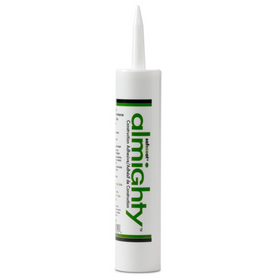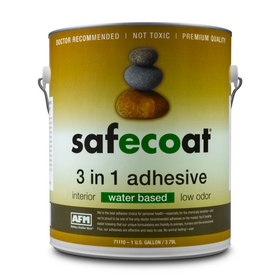
From Traditional Row House to Sustainable Home
Last Updated: Apr 13, 2025In the United States, buildings—the homes, apartment buildings, and offices—where we live and work account for about 39 percent of total carbon dioxide emissions. At the same time, on a global scale, the embodied carbon footprint of buildings is considered to be responsible for 11 percent of all annual greenhouse gas emissions. Among the almost 128 million households in the United States, the number of people who live in single-family homes or multifamily apartment or condo buildings that were specifically designed and built for sustainability is significantly lower than those that were not. The vast majority of residences across the country offer no real sustainability advantages.
Still, sustainable, energy-efficient, and net-zero construction methods have been gaining acceptance in recent years, across all price points. New technologies are bringing into new homes greater energy and operational efficiencies. Still, the environmental impact and the embodied energy footprint attached to new construction often go unconsidered.
According to one recent report, tearing down and replacing an older, energy-inefficient building with a high-efficiency new home will take an average of 80 years to offset the ecological impact of the new construction project. For this reason, architect and sustainability expert Carl Elefante, of the national firm Quinn Evans Architects, has said: “The greenest building is the one that’s already built.”
Homeowners deciding whether to tear down or renovate their single-family home may find inspiration in Sharon Slusher, a Philadelphia resident who renovated her traditional row home in North Philadelphia. In 2007, Slusher brought together a group of architects and contractors—Canno Architecture and Design, Think Green Landscape Architecture, and Walnut Tree Construction, as well as the Energy Coordinating Agency of Philadelphia—to come up with a major sustainable-renovation strategy.
Table of Contents
- SmartHome, Sustainable Home
- Reclaimed Materials
- Greening a Row Home
- How “Green” is Philly?

After working on the renovation for three years, her new sustainable home, located just blocks away from Fairmount Park, became the city’s first “rehab” to receive LEED Platinum certification from LEED for Homes. Slusher’s project wasn’t initially intended to achieve LEED Platinum credentials, according to Grid Magazine: She just wanted to meet her aspirations for sustainable living in “an inviting, comfortable, well-designed home,” she said.
Slusher has since sold the home, nestled in a residential area two blocks from the Philadelphia Museum of Art. Her experience, however, demonstrates how careful design during home renovations can transformer older, energy-inefficient homes into more sustainable residences.
SmartHome, Sustainable Home
The 1,919-square-foot row house has two bedrooms, two and a half baths, a utility room, a private study, and a separate loft. The spacious kitchen anchors the home and is outfitted with several high-end, energy-efficient appliances, including a built-in coffee maker.

The development of the Internet of Things (IoT) has led to a full array of smart home technologies. Slusher’s retrofit included a Smarthome automation system that controls lighting, heating, cooling, solar blinds, and audio and security systems—all of which Slusher could control remotely through a dedicated app downloaded to her smartphone, tablet, or personal computer.
The smart home system installed in the home includes a full range of personalized settings and programmable operations (such as those offered by the smart thermostat for the home), which allow Slusher to save on energy bills and improve the home’s overall energy efficiency.

All of the windows were replaced with double-paned, energy-efficient, and ENERGY STAR rated windows filled with argon gas. These windows bring in abundant daylight, which reduces dependence on artificial lighting without sacrificing energy efficiency. The highly insulated windows also reflect heat from the summer sun to reduce cooling loads during warm weather. A multi-story window in the breakfast room opens up into a ground-level garden designed around a 6,000-gallon Koi pond, one of the many unique and environmentally beneficial green areas located throughout the home.

The energy-efficiency upgrades didn’t mean Slusher had to hold back on certain luxuries. The master bath, for example, includes several luxury (yet sustainable) features, including a steam room, a beautiful concrete sink, limestone walls, and river rock floors.
Reclaimed Materials
To reduce the embodied energy of the ambitious renovation project, Slusher and her team incorporated different types of reclaimed and salvaged materials. For example, much of the older flooring throughout the home was replaced with a beautiful white oak recovered from an old barn torn down in nearby Ohio. From a big picture perspective, Slusher’s decision to use salvaged wood flooring reduced the demand for lumber on our over-burdened forests; Slusher’s choice also reduced the embodied carbon footprint of the home by using a product from a nearby supplier.

The roof areas also have a built-in outdoor grill for outdoor parties, and a tiny waterfall to fill the patio area with the relaxing sounds of nature. These green spaces provide the homeowner with a unique take on biophilic architectural design and a relaxing, therapeutic green area in which to connect with the natural world.

To complement the abundance of vegetation, Slusher also installed a full solar array on the roof. The solar panels double as part of a pergola design for a rooftop sitting area that offers views of the city. With this renewable source of electricity, the home is able to provide almost half of the total household energy demand. Also up on the roof? Space for a hammock, of course.
How “Green” is Philly?
Several years after completing the retrofit, Slusher put the sleek, smart home up for sale. The original price tag of $1.3 million didn’t attract any buyers, but she was eventually able to sell the home for $849,000, a price significantly higher than similar homes in the vicinity. With its significant sustainable strategies and LEED certification, however, the former Slusher home remains an outstanding example of sustainable renovation among Philadelphia’s growing number of “green” homes.
In 2017, the real estate website ADOBO revealed a ranking of the U.S. cities with the most certified green construction. Philadelphia ended up in the top-10 list with 909 LEED-certified residential projects. Philly’s ranking: Eighth in the nation for sustainable residential projects.
Slusher’s story shows how sustainable renovations, passive house retrofits, and other sustainable upgrades for homes make both ecological and common sense. Besides drastically improving the value of an existing home, sustainable retrofits reduce a building’s carbon footprint while allowing homeowners to realize significant savings on energy bills from day one.
Tobias Roberts
Tobias runs an agroecology farm and a natural building collective in the mountains of El Salvador. He specializes in earthen construction methods and uses permaculture design methods to integrate structures into the sustainability of the landscape.












